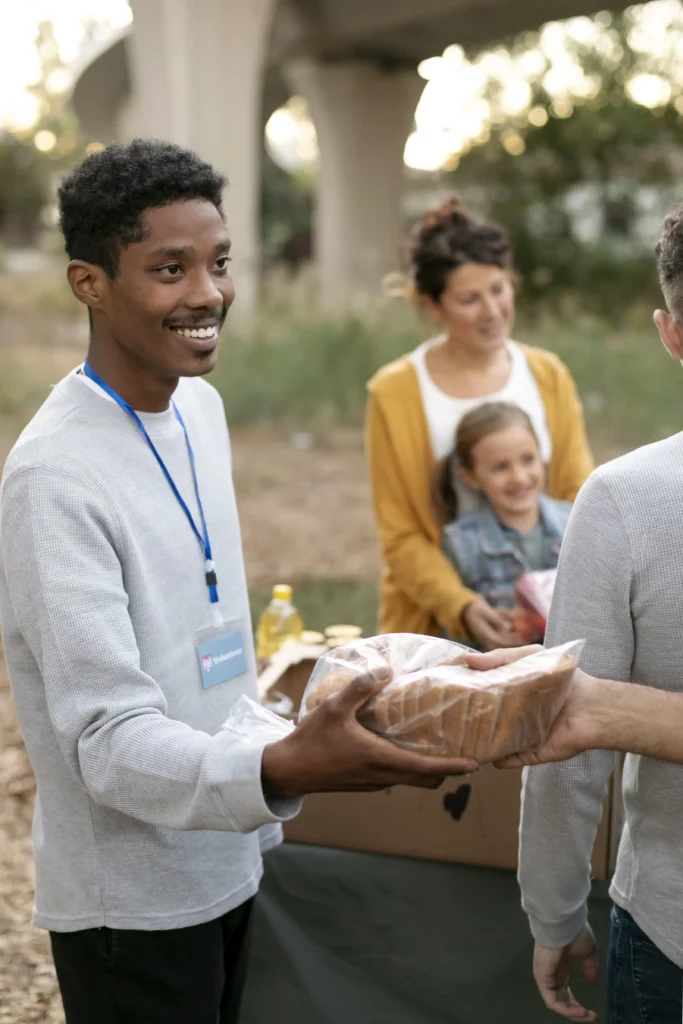Humanitarian Translation is a lifeline in emergencies. From the Ebola outbreak to refugee resettlement, it shows how translators turn chaos into clarity—providing vital health, safety, and legal information in people’s own languages. Explore real-world stories, technology’s evolving role, and why human translation remains essential to ethical and effective humanitarian aid.
Translators on the Frontlines: Real Stories from the Field
Humanitarian Translation during the Ebola outbreak—aid workers and translators helped local communities understand health and safety messages.

1. The Ebola Outbreak (2014–2016):
In West Africa, the Ebola crisis claimed over 11,000 lives. One major cause of the virus’s rapid spread was miscommunication—locals didn’t understand public health messages written in English or French, which weren’t their native languages.
Solution: Translators without Borders (TWB) deployed teams to translate critical messages into over 30 regional languages like Krio, Temne, and Mende. Once locals understood how the virus spread and how to protect themselves, infection rates dropped dramatically. It was a clear reminder of how Humanitarian Translation can directly save lives.
2. Rohingya Refugee Crisis (2017–present):
After fleeing violence in Myanmar, over 900,000 Rohingya refugees settled in Bangladesh’s Cox’s Bazar region. Most spoke only Rohingya, an oral dialect with no official script.
Challenge: Aid workers had no materials in Rohingya and struggled to communicate health, nutrition, and safety information.
Response: TWB and UNICEF worked together to produce audio recordings, pictorial guides, and voice-activated messaging in Rohingya, dramatically improving communication and reducing misinformation about sanitation and disease prevention. This highlights how Humanitarian Translation bridges gaps even when no written form of a language exists.
3. Ukraine War (2022–present):
When war broke out in Ukraine, millions fled to neighboring countries like Poland, Hungary, and Romania.
Problem: The sudden influx of Ukrainian refugees overwhelmed border aid teams, many of whom didn’t speak Ukrainian or Russian.
Response: The CLEAR Global Language Data Initiative rapidly built multilingual emergency glossaries and digital tools to help aid workers communicate key messages about border procedures, health services, and child protection. Volunteers across Europe contributed real-time translations into Ukrainian, Russian, Polish, Hungarian, and Romanian. These multilingual tools are another form of Humanitarian Translation, providing clarity in moments of extreme uncertainty.
What Does Translation Enable During Humanitarian Response?
Translation is more than just converting words—it empowers individuals in the middle of chaos:

Humanitarian Translation benefits table shows how informed decisions, legal protection, and cultural respect improve humanitarian response.
For instance, in Haiti post-2010 earthquake, medical translators helped explain treatment options in Haitian Creole, allowing patients to give informed consent—especially important when foreign doctors offered surgeries or vaccinations.
Stat to note:
A TWB survey found that over 60% of people affected by humanitarian crises did not understand the aid information they received unless it was in their first language. Without Humanitarian Translation, life-saving messages simply don’t reach the people who need them most.
Who Are the People Behind These Translations?
Translation during emergencies often happens in three ways:
- Professional humanitarians with language skills (e.g., Red Cross staff)
- Remote volunteers (via platforms like TWB or CLEAR Global)
- Community-based interpreters (locals trained quickly to bridge the gap)

Humanitarian Translation in action: One inspiring story comes from Cox’s Bazar, where a 22-year-old Rohingya refugee named Nur Hossain became a local translator. Having learned English and Bengali during his time in Bangladesh, he helped connect hundreds of families with health services and safety updates—and trained others to do the same. His story shows that Humanitarian Translation often comes from within the community itself.
These interpreters aren’t just translators—they’re protectors, advocates, and peacemakers.
The Difficulties No One Talks About
Humanitarian Translation isn’t easy. Here are some key challenges:
- Languages with no written form (like Rohingya or some Congolese dialects)
- Extreme time pressure—messages often need translating within hours
- Technical language—medical or legal terms may not exist in target languages
- Emotional toll—translators often process traumatic stories without mental health support
Additionally, in some regions, mistranslations have led to riots, panic, or misdiagnosed medical conditions. This makes quality control essential—even when working fast.
The Role of Technology in the Future of Humanitarian Translation
Technology is making translation faster and more scalable, but humans still play a critical role.
Google Translate and Microsoft Translator now support over 100 languages—but few African or minority languages are accurately covered. AI voice bots and apps (like ChatGPT, Karya, or Tarjimly) are being used to assist refugees in real time. Gamayun by CLEAR Global is creating AI-based tools for underserved languages in Africa and Asia.
Yet even the best AI cannot grasp cultural nuance or read between the lines of human suffering. The future of Humanitarian Translation will be hybrid—machines for speed, people for empathy.

In humanitarian response, translation is not optional—it is fundamental to delivering ethical, inclusive, and effective aid. Without it, the most vulnerable remain voiceless and invisible.
Whether it’s a mother in a refugee camp receiving life-saving health info in her dialect, or a displaced teen understanding how to seek asylum—translation provides hope, clarity, and a path forward.
As TWB rightly says: “Everyone deserves to be heard and understood—especially in a crisis.”
At Az-Loc, we believe that language is more than communication—it’s connection, access, and empowerment. Whether you’re a humanitarian organization, legal firm, healthcare provider, or global business, your message deserves to be clear, culturally sensitive, and precisely delivered—no matter the language.
We provide:
- Culturally adapted content that resonates with your audience
- Urgent turnaround options for time-sensitive missions
- Expert linguists with deep sector-specific knowledge—from legal to medical, humanitarian to corporate
In a world where words can change lives, we’re here to make sure yours reach the right people, in the right way, at the right time. Contact us today to see how our Humanitarian Translation expertise can help your message make a real impact.
